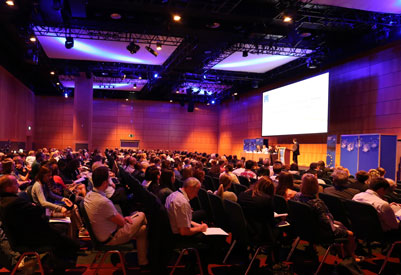EPRW 2014: A great success
- Like
- Digg
- Del
- Tumblr
- VKontakte
- Buffer
- Love This
- Odnoklassniki
- Meneame
- Blogger
- Amazon
- Yahoo Mail
- Gmail
- AOL
- Newsvine
- HackerNews
- Evernote
- MySpace
- Mail.ru
- Viadeo
- Line
- Comments
- Yummly
- SMS
- Viber
- Telegram
- Subscribe
- Skype
- Facebook Messenger
- Kakao
- LiveJournal
- Yammer
- Edgar
- Fintel
- Mix
- Instapaper
- Copy Link
Posted: 14 July 2014 | EPRW 2014 | No comments yet
New Food was in attendance at the 10th European Pesticide Residues Workshop in Dublin from 30 June – 3 July 2014…


New Food was in attendance at the 10th European Pesticide Residues Workshop (EPRW) in Dublin from 30 June – 3 July 2014. The event was a great success and was extremely well run with an interesting programme, both scientific and social.
As Chair, Finbarr O’Regan received great support from the Department of Agriculture, Food and the Marine (DAFM) and Keynote PCO. The scientific programme covered areas such as the history of pesticides, the issue of ‘cocktail effects’ of pesticide residues, the problem of counterfeit products on the market, developments in the areas of residue analysis along with a ‘themed day’ on the area of difficult compounds and difficult matrices. Overall the conference provided a comprehensive view of the current situation across the area of pesticide residues.


Overall the conference provided a comprehensive view of the current situation across the area of pesticide residues
The conference was officially opened by Tom Hayes, Minister of state at the DAFM. Following his opening speech an interesting talk on the history of plant protection products was given by Lutz Alder. The presentation covered catastrophes such as the famine in Ireland along with other devastating crop failures which would now be preventable using available pesticides and fungicides. Another area addressed was the evolution from wide spectrum extremely toxic compounds to the products of today which are far more targeted, less toxic, and less persistent in the environment following use.
The presentation went on to chart the history of the EPRW from a technical perspective including developments with LC-MSMS and GC-MSMS technology. These techniques provide a large scope of analysis along with selectivity and sensitivity far beyond that envisaged by legislators back in 1996 when the EPRW was first run in Alkmaar, The Netherlands.
Day two began with cumulative risk assessment, which is one of the most challenging topics in the area of pesticide residues. Currently single compounds are assessed on an individual basis to determine the risk to consumers of residues above their legal limits according to EU legislation. The European parliament has passed food related regulations for the consideration of ‘cocktail effects’ of pesticide residues. The current thinking of combining compounds with a similar mode of action may not be the best option as there is evidence that chemicals with very different modes of action can produce common mixture effects. This discussion is ongoing and is of great interest to risk assessors across Europe.
Jim Garvey of DAFM gave a very interesting talk on the problem of illegal formulated products. This is an area of great interest to laboratories analysing residues, since illegal products may contain different actives or impurities which may need to be added to the routine scope of analysis in order that these issues can be detected, tracked and dealt with accordingly.
EU Regulation 669/2009 on import controls is another area of interest for official laboratories across the EU. André de Kok gave an insight into how the legislation affects the way in which his laboratory is run; this is also relevant to other laboratories. The need to meet turnaround times of 24 hours while achieving the quality standards required is a challenge. The relative time required to perform the various steps of an analytical residue method has changed over time, resulting in data processing and interpretation, as well as quality control becoming the crucial steps in sample throughput times. This legislation is yet another challenge for all pesticide residue analysis laboratories.
Wednesday was the themed day, which covered matrices and compounds that cause difficulties for residue analysis laboratories. One of the issues covered was single residue methods (SRMs). This refers to compounds which need specific extraction and or column technology and as such need to be analysed separately. Difficult matrices such as liver or tea were reported to have issues with clean up and matrix interference during analysis. Complex residues were also dealt with and are still a challenge in terms of analysis of both the parent compound and other aspects of the residue definition as laid out in the legislation.
The final day of EPRW covered the challenges faced by producers of fruit and vegetables for the EU market as well as the effect of changing EU legislation on the companies’ manufacturing pesticides. A case study on orange production in Uruguay was presented, which illustrated perfectly the care taken to ensure that EU legislation is complied with.
Overall the conference was an overwhelming success with the city centre location of the conference centre positively contributing to the overall enjoyment of the event by the participants.



